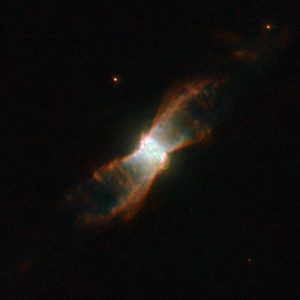NGC 6881
Viaggio cosmico di una nebulosa a forma di farfalla

Il telescopio Hubble ha immortalato un’affascinante nebulosa planetaria, simile ad una delicata farfalla, denominata NGC 6881.
Situata nella costellazione del Cigno, è formata da una nube interna, che si estende per circa un quinto di anno luce, e da “ali” simmetriche che si espandono per circa un anno luce da un’estremità all’altra. La simmetria potrebbe essere dovuta ad una stella binaria nel centro della nebulosa. Continua a leggere